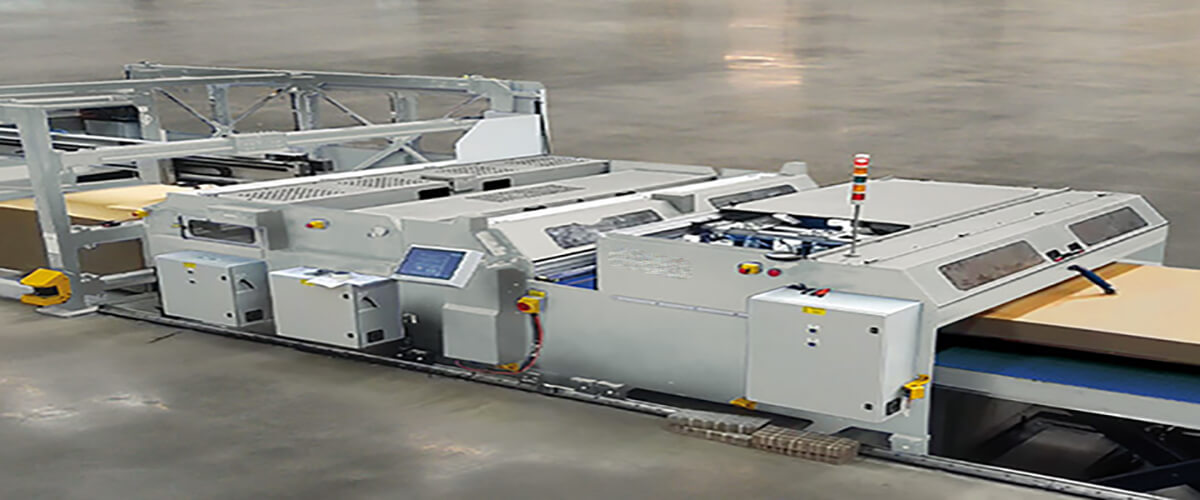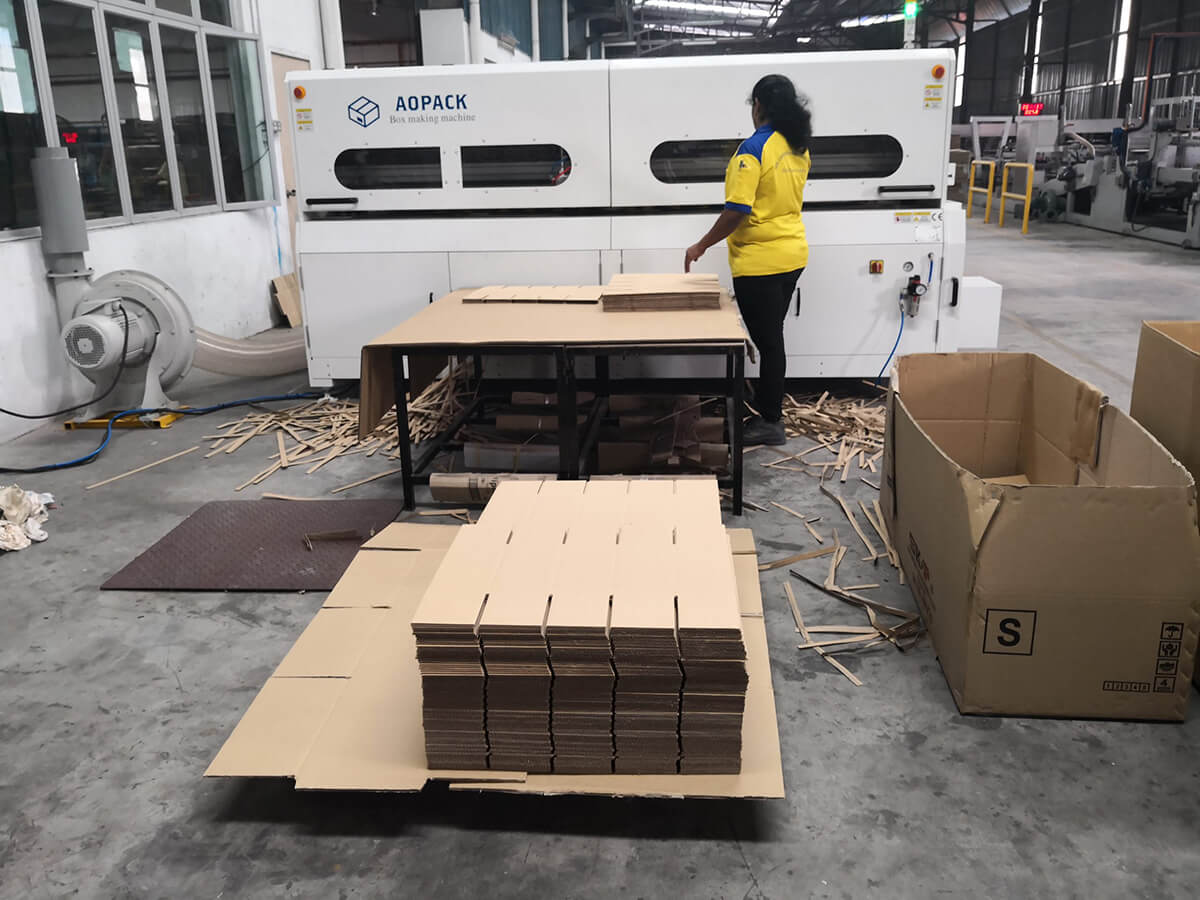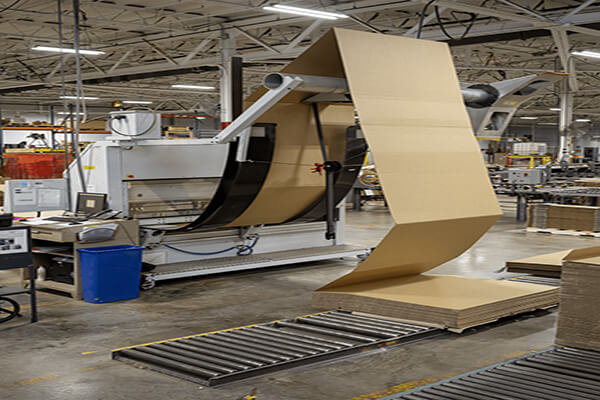As a factory owner, you understand that having the right equipment is essential to running your business. If you are considering investing in box manufacturing machines, you’ve come to the right place. In this blog post, we will discuss what kinds of box making machines there are, why box-manufacturing machines are beneficial, and how they can help increase production in your factory. Read on to learn more about box manufacturing machines and what they can do for you!
1. Steps to use the box-making machine
In general, box manufacturing can be divided into three major parts: the production of cardboard, the processing of cardboard, and the process of making cardboard boxes from cardboard. So what machines are needed for each process?

1) Box manufacturing first step: Cardboard making
Equipment for producing cardboard: single-layer/three-layer/five-layer/seven-layer corrugated cardboard production line.
Machines for producing corrugated cardboard, take the production of 5-layer cardboard as an example, there are 9 main machines required, if three-layer cardboard needs to be produced, remove 3 and 4
1) single facer (hydraulic mill roll stand, hot roller, gluing roller)
2) Corrugated roller (simple corrugated)
3) single facer (hydraulic mill roll stand, hot roller, gluing roller)
4) Corrugated roller (simple corrugated)
5) Glue machine (glues all cardboard)
6) Single facer(hydraulic mill roll stand)
7) Drying machine (drying effect)
8) Cross-cutting machine, slitter scorer machine (cutting size cardboard, and pressing line)
9) Cardboard outlet (cardboard output from here)
2) Box manufacturing second step: Cardboard processing
1) N-color printing machine (N is 1,2,3,4,5 if N is 4, then 4 colors can be printed on the box at one time)
2) Slotting machine (cut the cardboard into shape, which is conducive to pasting and binding)
3) Die-cutting machine: necessary equipment for producing special-shaped cartons and color printing.
4) Slitter scorer machine: remanufactured into cardboard, slitting cardboard, which can process relatively small cardboard.
5) Thin-blade machine: remade cardboard, slitting cardboard, not suitable for too small cardboard, but the paper separation effect is better than that of slitter scorer machine.
6) Flute Laminating machine (paste a layer of printed paper on the cardboard)
3) Box manufacturing Third step: cardboard making to carton
Machines for making cardboard into cartons
1) Folding Gluing machine (stick boxes, some foods cannot use nailed boxes)
2) Stitching box machine (nail boxes, the firmness is better than sticky ones)
3) Other auxiliary equipment, such as paper feeder, bundling machine, strapping machine, carton stacker machine, and so on.

2. The benefit of the box manufacturing machine
The following are the benefits of the box manufacturing machine.
1) Increased Efficiency
One of the major benefits of using box manufacturing machines is increased efficiency. Many manual processes require multiple people to complete tasks which can lead to delays and errors. With automated box manufacturing machines, one machine operator can complete various processes in a fraction of the time it would take a team of people. This allows for shorter turnaround times and more efficient production. Furthermore, automated box manufacturing machines reduce the risk of human error which leads to higher quality products and improved customer satisfaction.
2) Cost Savings
Another benefit of using automated box manufacturing machines is cost savings. By investing in box manufacturing machinery, you will be able to reduce labor costs since fewer employees will be needed overall. Additionally, these machines are designed to last for many years with minimal upkeep required which means long-term savings on maintenance costs as well. Finally, because these machines are so efficient, you will save money on materials since less material is wasted during production.
3) Increased Production Capacity
Finally, one of the most important benefits of using automated box manufacturing machines is increased production capacity. By streamlining processes with automated machinery, factories are able to produce more boxes in a shorter period of time compared to manual processes. This allows factories to produce larger quantities of boxes at a faster rate while still maintaining product quality control standards. Furthermore, this increases your factory’s ability to meet customer demands quickly and efficiently thus increasing customer satisfaction overall.

3. Conclusion
Investing in box manufacturing machinery can provide numerous benefits for factory owners such as increased efficiency, cost savings, and increased production capacity. Automated machinery reduces labor costs while minimizing errors due to human error which leads to higher quality products and improved customer satisfaction overall.
Furthermore, these machines have long lifespans with minimal maintenance requirements meaning long-term cost savings as well as increased production capacity allowing factories to meet customer demands quickly and efficiently thus increasing customer satisfaction overall. So if you are looking for ways to increase productivity in your factory without breaking the bank then consider investing in box manufacturing machinery today!





Leave A Comment